FRIDAY, JUNE 12
■ Mercury remains under Pollux and Castor in twilight, as shown below, but it has faded to magnitude 1.3. That's less than half as bright as Procyon, mag 0.4, which twinkles about two fists at arm's length to its left. Catch Mercury this evening while you still can; it's fading fast and sinking low.
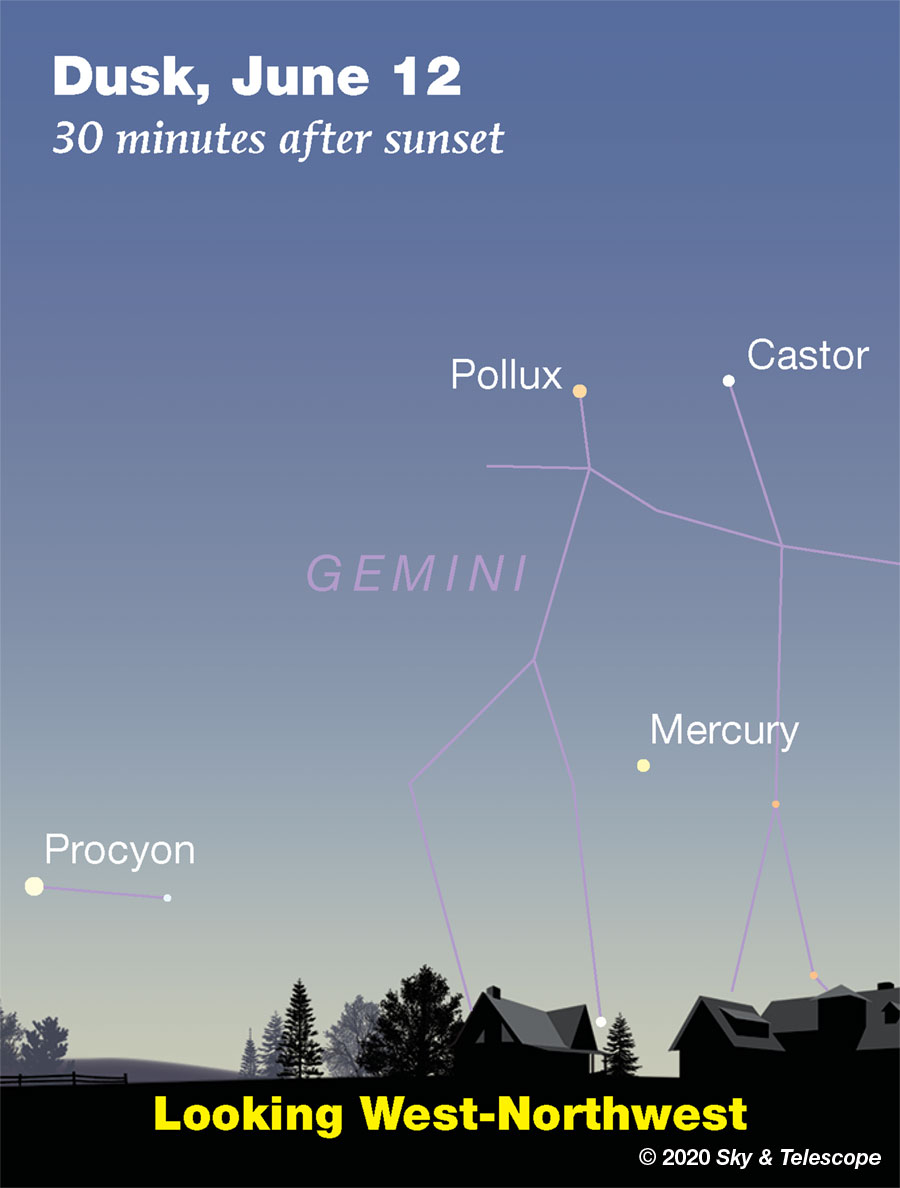
■ Last-quarter Moon tonight (exactly last-quarter at 2:24 a.m. Saturday morning EDT). The Moon rises around 1 or 2 a.m. local daylight-saving time, with bright Mars, magnitude –0.2, shining dramatically orange above or upper right of it, by only about 4°. As Saturday's dawn brightens, the Moon-Mars pair stands high in the southeast.
Neptune, a mere 8th magnitude, lurks in their far, dark background.
SATURDAY, JUNE 13
■ As we count down the last seven days to official summer (the solstice is on June 20th), the big Summer Triangle shines high and proud in the east after dusk. Its top star is bright Vega. Deneb is the brightest star to Vega's lower left, by 2 or 3 fists at arm's length. Look for Altair farther to Vega's lower right. Of the three, Altair is midway in brightness between Vega and Deneb.
If you have a dark enough sky, the Milky Way runs across the Triangle's lower part.
SUNDAY, JUNE 14
■ After dark look southeast, fairly low, for orange Antares, "the Betelgeuse of summer." Both are 1st-magnitude "red" supergiants. Around and to the upper right of Antares are the other, whiter stars of upper Scorpius, forming its distinctive shape. The rest of the Scorpion curls down toward the horizon.
And right after dark, spot Arcturus way up high toward the south. Three fists below it is Spica. A fist and a half to Spica's lower right, four-star Corvus, the springtime Crow, is heading down and away as spring draws to a close.
MONDAY, JUNE 15
■ It's only five days to summer. But as twilight fades, look for wintry Capella very low in the north-northwest very out of season. The farther south you are, the lower Capella will appear; you may need binoculars. But if you're as far north as Montreal or a Portland (either the one in Oregon or Maine), Capella is actually circumpolar.
TUESDAY, JUNE 16
■ After dark, Vega dominates the eastern sky. Barely lower left of it is 4th-magnitude Epsilon Lyrae, the famous Double-Double. Epsilon forms one corner of a roughly equilateral triangle with Vega and Zeta Lyrae. The triangle is less than 2° on a side, hardly the width of your thumb at arm's length.
Binoculars easily resolve Epsilon. And a 4-inch telescope at 100× or more should resolve each of Epsilon's wide components into a tight pair.
Zeta Lyrae is also a double star for binoculars; much closer and tougher, but plainly resolved in any telescope.
And Delta Lyrae, below Zeta, is a much wider and easier pair.
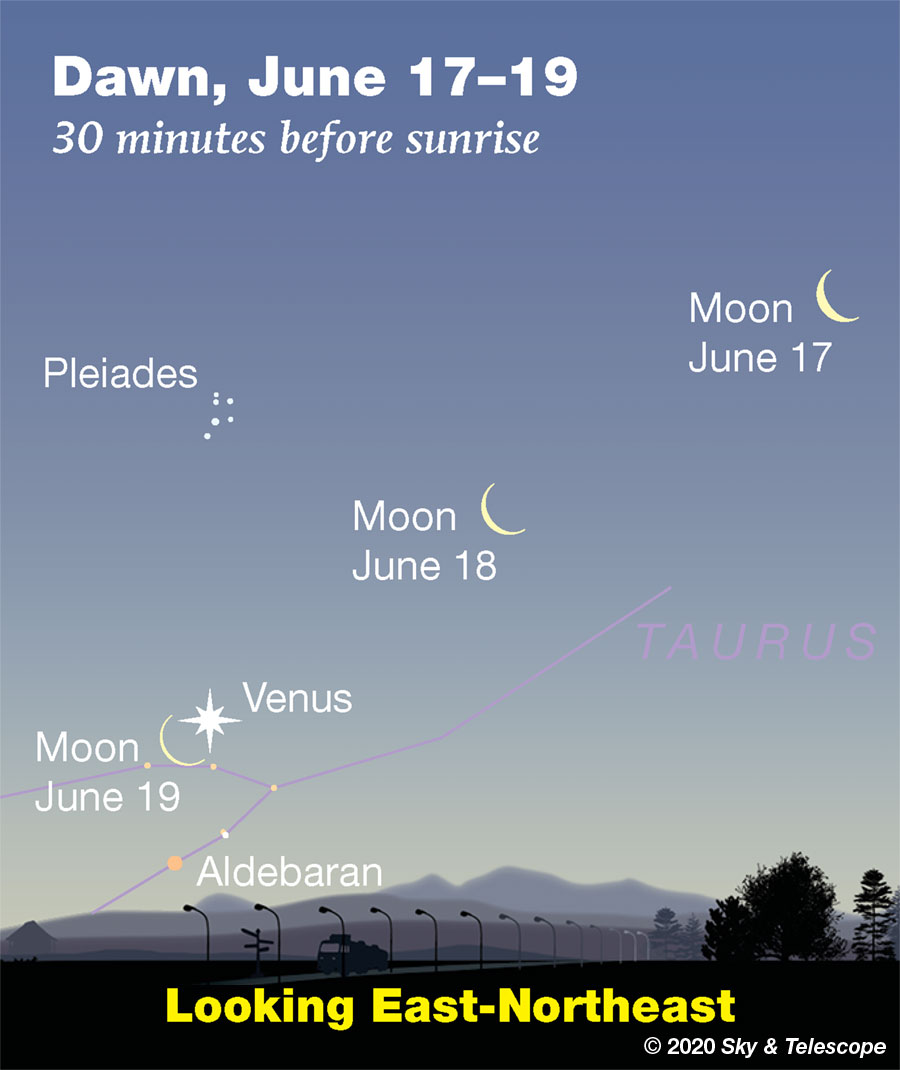
WEDNESDAY, JUNE 17
■ Arcturus, magnitude zero – as bright as Vega – shines pale yellow-orange high overhead toward the south. Bootes the cowherd, its constellation, extends in a kite shape up from Arcturus. The kite is narrow, slightly bent, and 23° long: about two fists at arm's length.
Just east (left) of the Bootes kite is the pretty but dim semicircle of Corona Borealis, the Northern Crown. It has only one modestly bright star, 2nd-magnitude Alphecca or Gemma: its crown jewel.
THURSDAY, JUNE 18
■ In Friday's dawn, bring binoculars to a location with a view very low to the east-northeast to catch the thin crescent Moon paired with Venus, as illustrated above. For North America they'll appear no more than a degree or two apart.
And for New England and parts of eastern Canada, the Moon will occult Venus very low just after the Moon rises during dawn. See Joe Rao's Watch the Moon Pair Up with Venus on June 19th, with map and an occultation timetable for cities.
Occultation or not, this pairup will offer a challenging photo opportunity if you'd like to try. Bring your best camera, a tripod, and a long lens – or a wide-field, camera-adaptable telescope.
FRIDAY, JUNE 19
■ Leo the Lion is mostly a constellation of late winter and spring. But he's not gone yet. As twilight ends look due west, somewhat low, for Regulus, his brightest and now lowest star: the forefoot of the Lion stick figure.
The Sickle of Leo extends upper right from Regulus. The rest of the Lion's constellation figure extends for almost three fists to the upper left, to his tail star Denebola, the highest. He'll soon be treading away into the sunset.
SATURDAY, JUNE 20
■ The June solstice arrives today at 5:44 p.m. EDT (21:44 UT). This is when the Sun reaches its northernmost declination in Earth's sky and begins its six-month return southward. Summer begins in the Northern Hemisphere, winter in the Southern Hemisphere.
For us northerners, this is the longest day and shortest night of the year.
It's also the day when (in the north temperate latitudes) the midday Sun passes the closest it ever can to being straight overhead, and thus when your shadow becomes the shortest it can ever be at your location. This happens at local apparent [solar] noon, which is probably rather far removed from noon in your civil (clock) time.
And if you have a good west-northwest horizon (again in mid-northern latitudes), mark very precisely where the last bit of the Sun sets. In a few days you should be able to detect that the Sun is again starting to set a just little south (left) of that point.
This Week's Planet Roundup
Mercury is ending its apparition in evening twilight; see the illustration at the top of this page. The little planet is fading fast, from magnitude 1.3 on June 12th to 1.9 on the 15th, while dropping out of view deep into bright twilight.
Venus is very deep in the glow of sunrise. But wait a week or so. Venus is on its way up to becoming the bright Morning Star of summer and fall.
Mars rises in the east around 1 a.m., shining bright orange (magnitude –0.2) at the Aquarius-Cetus border. Watch for it to clear the horizon to the lower right of the Great Square of Pegasus. By the first light of dawn Mars is fairly high in the southeast, for fairly good telescopic viewing.
This week Mars grows from 10 to 11 arcseconds in apparent diameter; we're approaching it as we speed along in our faster orbit around the Sun. In a telescope Mars this month is as gibbous as it gets, 84% sunlit. Look for the planet's bright South Polar cap and any discernable dark markings. Mars will reach 22.6 arcseconds wide when it passes closest by Earth around opposition in the first half of October.
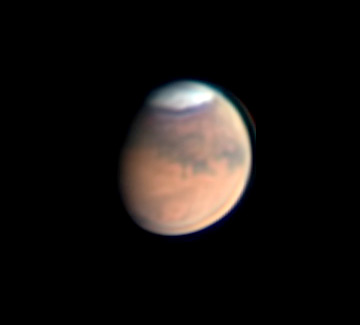
Jupiter and Saturn (magnitudes –2.6, and +0.3, respectively) rise in late evening, around 11 p.m. or so: Jupiter first, then dimmer Saturn following about 20 minutes behind. They're 5° apart. Farther to Jupiter's right, look for the Sagittarius Teapot resting upright.
The two giant planets shine at their highest and telescopic best in the hour or so before the beginning of dawn. They straddle the border of Sagittarius and Capricornus. Keep up with the telescopic interplay of Jupiter's moons and their shadows, and the transit times of Jupiter's Great Red Spot, with the June Sky & Telescope, page 50.
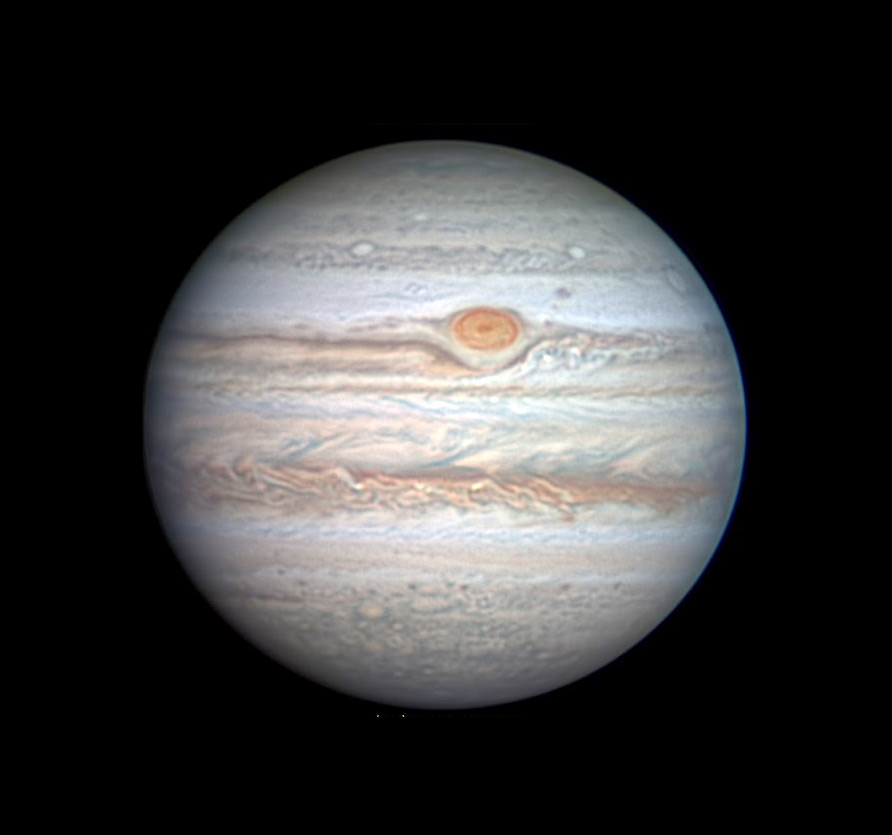
Uranus is still too low in the glow of dawn.
Neptune (magnitude 7.9, in Aquarius) is well up in the southeast before dawn begins, in the vicinity of Mars.
All descriptions that relate to your horizon — including the words up, down, right, and left — are written for the world's mid-northern latitudes. Descriptions that also depend on longitude (mainly Moon positions) are for North America.
Eastern Daylight Time (EDT) is Universal Time (UT, UTC, GMT, or Z time) minus 4 hours.
Want to become a better astronomer? Learn your way around the constellations. They're the key to locating everything fainter and deeper to hunt with binoculars or a telescope.
This is an outdoor nature hobby. For an easy-to-use constellation guide covering the whole evening sky, use the big monthly map in the center of each issue of Sky & Telescope, the essential magazine of astronomy.
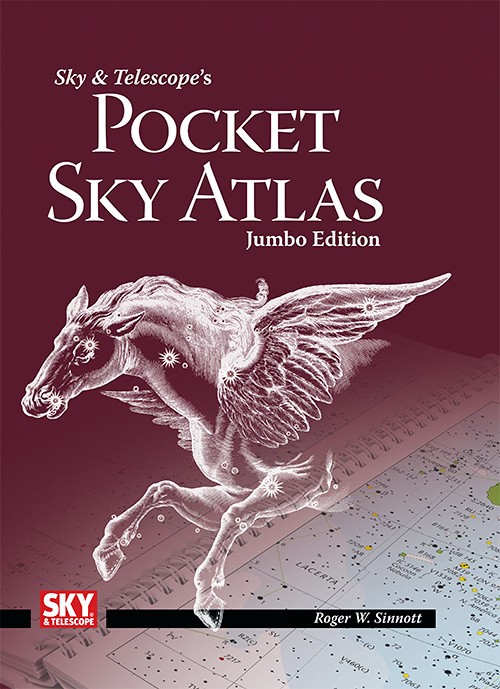
Once you get a telescope, to put it to good use you'll need a detailed, large-scale sky atlas (set of charts). The basic standard is the Pocket Sky Atlas (in either the original or Jumbo Edition), which shows stars to magnitude 7.6.
Next up is the larger and deeper Sky Atlas 2000.0, plotting stars to magnitude 8.5; nearly three times as many. The next up, once you know your way around, are the even larger Interstellarum atlas (stars to magnitude 9.5) or Uranometria 2000.0 (stars to magnitude 9.75). And read how to use sky charts with a telescope.
You'll also want a good deep-sky guidebook, such as Sky Atlas 2000.0 Companion by Strong and Sinnott, or the bigger (and illustrated)Night Sky Observer's Guide by Kepple and Sanner.
Can a computerized telescope replace charts? Not for beginners, I don't think, and not on mounts and tripods that are less than top-quality mechanically, meaning heavy and expensive. And as Terence Dickinson and Alan Dyer say in their Backyard Astronomer's Guide, "A full appreciation of the universe cannot come without developing the skills to find things in the sky and understanding how the sky works. This knowledge comes only by spending time under the stars with star maps in hand."
![]() Audio sky tour. Out under the evening sky with your earbuds in place, listen to Kelly Beatty's monthly podcast tour of the heavens above. It's free.
Audio sky tour. Out under the evening sky with your earbuds in place, listen to Kelly Beatty's monthly podcast tour of the heavens above. It's free.
 4
4








Comments
Rod
June 13, 2020 at 10:11 am
This morning (0800-0900 EDT), I enjoyed telescope views of sunspot AR2765, slowly moving across the Sun since I first observed on 06-Jun and reported earlier on spaceweather.com. I viewed the Last Quarter Moon in the morning sky too using my 10x50 binoculars, Clavius crater area distinct along the terminator line with other craters. The sunspot region and lighter plage very distinct at 71x using yellow and red filters with my glass, white light solar filter. Great, clear skies here today mary beth :)---Rod
You must be logged in to post a comment.
mary beth
June 13, 2020 at 12:27 pm
Excellent! I believe today is one of the earliest sunrises, so that was a very fun and interesting way to celebrate! Not long until the sun is as far north as he’s going to get…
“When all has been said, the adventure of the sun is the great natural drama by which we live, and not to have joy in it and awe of it, not to share in it, is to close a dull door on natures's sustaining and poetic spirit.”
― Henry Beston, The Outermost House: A Year of Life On The Great Beach of Cape Cod
You must be logged in to post a comment.
Curt Renz
June 14, 2020 at 3:38 pm
Referring to a "Last-quarter Moon" can be confusing or misleading. The same for the term "First-quarter Moon". The Moon is in its last-quarter during the entire final week of a lunation. At the start of its last quarter, what appears in the sky is a Waning Half Moon. And at the end of its week-long first-quarter of a lunation, we see a Waxing Half Moon in the sky.
You must be logged in to post a comment.
Curt Renz
June 14, 2020 at 3:55 pm
I might add that he more proper terms for the cusps of two of the quarters of a lunation are eastern or western "quadrature".. Technically a Half Moon appears at the times of eastern or western "dichotomy". The average time difference between quadrature and dichotomy is only about 17 minutes. And of course the published times are for a hypothetical geocentric observer. For actual topocentric observers, the times vary.
You must be logged in to post a comment.
You must be logged in to post a comment.